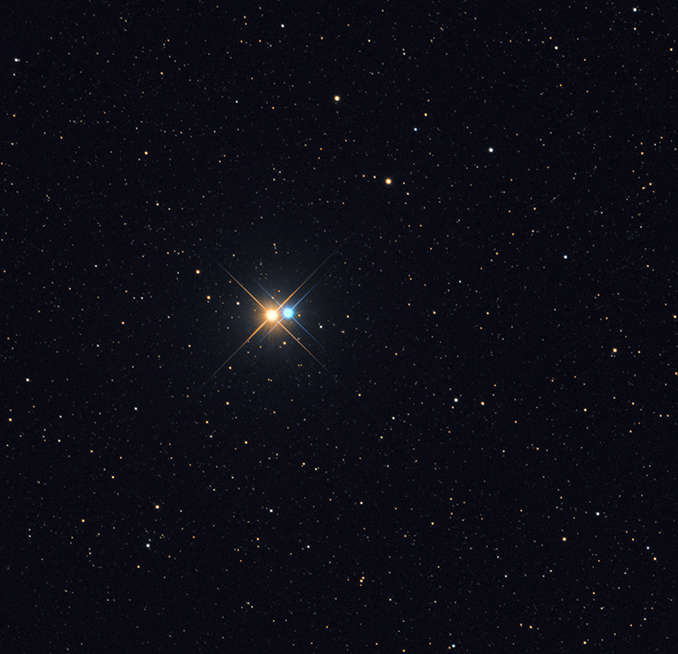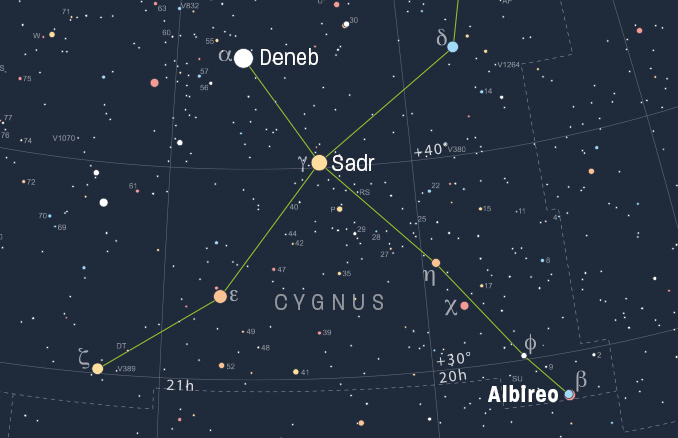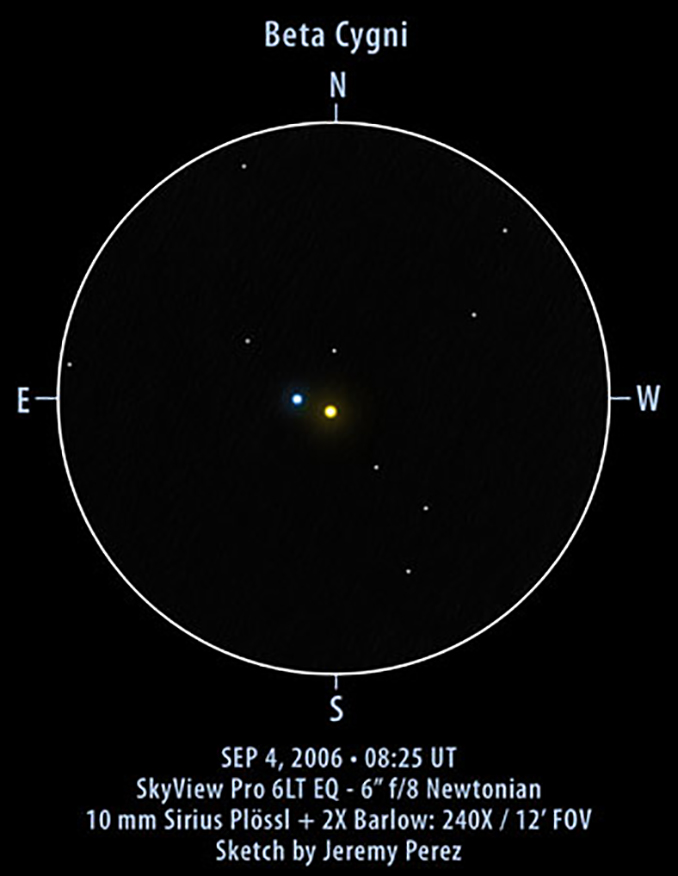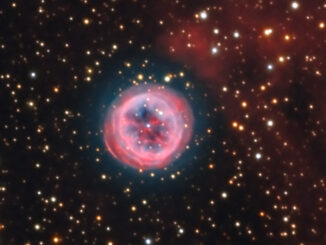
Albireo (beta [β] Cygni) is unquestionably the finest colour-contrast double star in the entire heavens, providing an unmissable target on summer nights. Its components’ beautiful and vivid colouring – golden yellow and sapphire blue – can be enjoyed through a small telescope and the stars lie sufficiently far apart that they can easily be separated, even in a steadily mounted pair of 10 × 50 binoculars.

How to observe
Albireo marks the head of Cygnus (the Swan), at the end of its outstretched neck. The constellation totally dominates summer nights at mid-northern latitudes, its principal stars forming the familiar ‘Northern Cross’ asterism, with mighty Deneb (alpha [α] Cygni, magnitude +1.2) representing the swan’s tail. As darkness falls on early August evenings, the Cross lies over 60 degrees high and a few minutes before midnight BST Albireo culminates at around 66 degrees altitude (from London).
Albireo is bright enough and its colours sufficiently deep that it remains a great sight even under a light-polluted sky, albeit that its wonderful colours will be washed-out to a degree. A small telescope will show the brilliant golden-yellow colour of primary star, Albireo A, shining at magnitude +3.1, separated from the magnitude +5.1 secondary Albireo B by a very forgiving 34.3 arcseconds.
Little change has been seen in the components separation and position angle (54 degrees) in the 263 years since James Bradley first measured them, implying an orbital period that could be as long as 100,000 years if the stars are a true physical binary and not merely a line-of-sight optical double. The jury is still out on that one.
However, its colours tally nicely with its physical properties; Albireo A is a K3-class orange giant, while Albireo B is a hotter and smaller B8-class dwarf. As is common with colour-contrast double stars, various different shades and hues have been reported, with a more orange hue for the primary and a greenish tint to the secondary being the most commonly seen.




